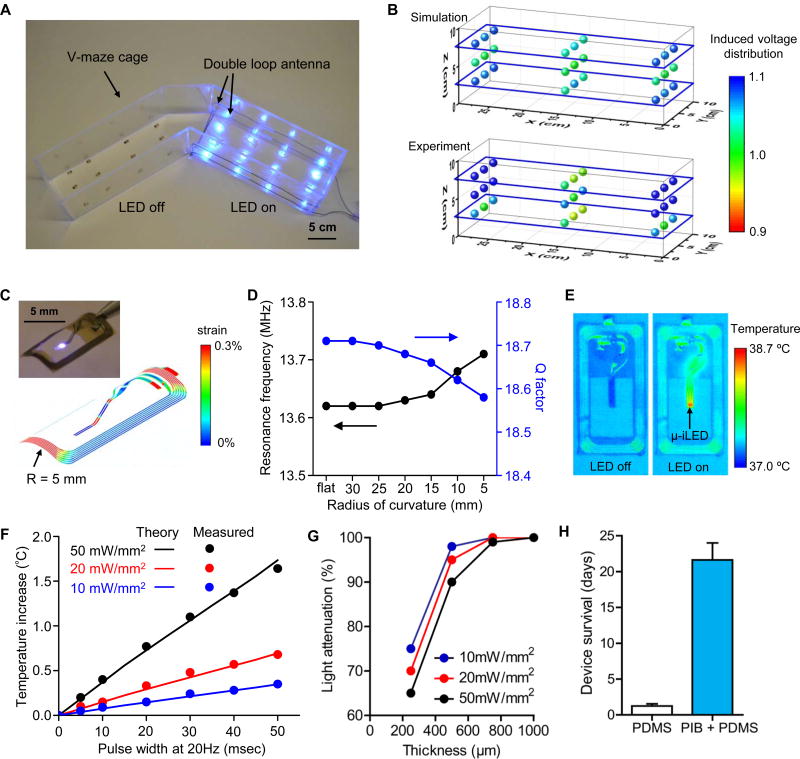Figure 2. Consistency of power transmission throughout a behavior arena and with mechanical deformation, thermal management, and in vivo robustness of the wireless optoelectronic systems.
(A) Image of wireless operation of 12 devices in each arm of a V-maze preference arena with the double loop antennas. (B) Simulation (top) and experimental measurement (bottom) of relative output voltage distribution for 27 devices distributed at heights of 2.5 cm, 5 cm, and 7.5 cm from the arena floor. (C) The distribution of the effective strain in the copper coils for the radius of curvatures R = 5 mm. The inset shows a picture of a bent device with a bending radius of 5 mm. (D) The Q factor and resonance frequency obtained by EM simulation for deformed devices with different radii of curvature, from planar to 5 mm. (E) Infrared image of the device surface before and during continuous wireless operation with a power of 50 mW/mm2. (F) Temperature change of µ-ILEDs as a function of pulse width of operation at different output powers of 10, 20, and 50 mW/mm2. (Lines: calculated theoretical values, Symbols: measured experimental values). (G) Blue light attenuation through longitudinal spinal cord slices (250–1000 µm) at 10, 20, and 50 mW/mm2. (H) Mean (± SEM) days of in vivo device survival when encapsulated with a monolayer of PDMS alone (white column) or a bilayer of PIB and PDMS (blue column).

